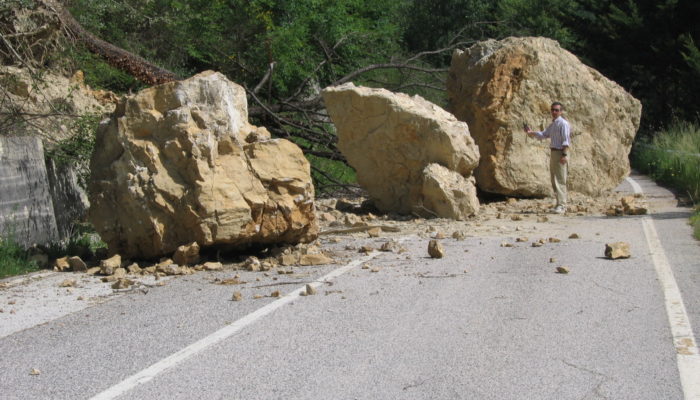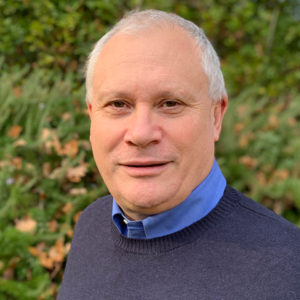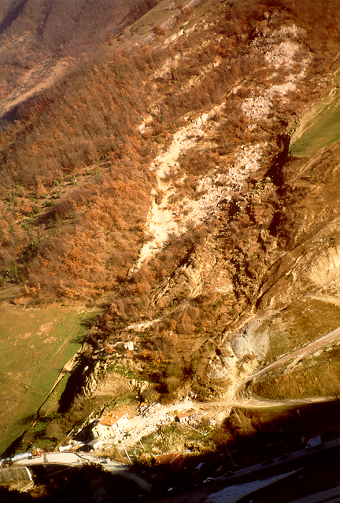
Dr Fausto Guzzetti, current Research Director of the National Research Council (CNR) in Italy, has been awarded the 2021 Sergey Soloviev Medal for “his fundamental contributions to the field of natural hazards and his remarkable efforts to link the scientific community and civil protection authorities to mitigate risk for exposed populations”. From his passion for mountains and caves and his “hopeless” curiosity to questions and challenges that still lay ahead in the field of natural hazards, I had the pleasure to interview him for you, let’s discover more about Fausto’s character together.
I like to think that my research career did not begin when I joined CNR, but years earlier, when I started measuring caves, to understand their formation and to discover new ones.

Dr Fausto Guzzetti
Who Is Fausto Guzzetti?
I am a geologist with a passion for geomorphology and an interest in natural hazards; passion and interest rooted in my youth spent hiking mountains and descending into caves in the Alps and the Apennines. I have always been interested in research and discoveries, whether natural, geographical, or scientific. Perhaps because I am hopelessly curious. I like to think that my research career did not begin when I joined CNR, but years earlier, when I started measuring caves, to understand their formation and to discover new ones.
I was lucky enough to work with special people, some at the top of their fields, from whom I learned a lot; I like learning. As I have grown older, I have developed an interest in the philosophy of science, and how it can – and should – help us understand natural phenomena, predict their dynamics, and help protect us from their consequences.
Past and present research interests
After studying caves as an amateur, and after a short spell measuring beddings and mapping the folds and faults of the central Apennines for my master thesis, I spent most of my time studying landslides, from different perspectives, because I get bored of looking at things from the same point of view. In the beginning, the late 1980s, it was not easy. At the time, the study of landslides appeared to me as limited mostly to the investigation of individual failures – some of which indeed fascinating, but something that never interested me much. But I am stubborn. I did not know it yet, but I was far more interested in understanding the populations of landslides.
Why are some landslides small, and others are large? Why do they cluster (… do they?). What happens when hills and mountains are shaken by an earthquake, are wet by rainfall, or soaked by the rapid melting of snow? I did not know it because I was caught mapping landslides, in the field or looking at thousands of aerial photographs. That period was crucial and stimulated my imagination. Looking at thousands of landslides pushed me to find similarities and differences, to search for regularities or singularities, to look for patterns or randomness; scribbles that slowly became codes in computers and then first statistical and then conceptual models. I know; it should have been the other way around. But it is the path I followed.
Are landslides predictable?
With an erratic, poorly consistent, somewhat disorganized, and sometimes wrong approach, I have long been working on the prediction of landslides. And without even considering the key question: are landslides predictable? First, it was the prediction of where landslides may occur. Then attempts to predict their magnitude, given by their number or size (width, length, area, volume). Then more uncertain predictions about the frequency of landslides and projections on what we should expect in a changing climate. Ultimately, the anticipation of the consequences of landslides, and the design and operation of geographical landslide early warning systems, where the ability to forecast is only one of the skills needed to play a challenging game with some hope of winning it.
With time, it became clear to me that – well, perhaps – it was possible to think of a general model for landslide prediction. But this positivist and increasingly mature idea is counterbalanced by the awareness of the uncertainty that permeates our prediction capabilities. The question I now ask is no longer whether landslides are predictable – I know they are, to an extent -, but whether our ability to predict landslides can be useful to society.

A deep-seated, complex slide occurred on 6 January 1997 at Valderchia, north of Gubbio, central Italy. The landslide was triggered by rapid snow melting. Photo Credit: Fausto Guzzetti (distributed via imaggeo.egu.eu)
The question I now ask is no longer whether landslides are predictable – I know they are, to an extent -, but whether our ability to predict landslides can be useful to society.
The urgency of a new science
Landslide forecasting and landslide early warning systems – a not so recent fixation (or obsession?) of mine – and more broadly the prediction of natural hazards and their consequences, are fascinating, complex topics of scientific, technological, and societal interest. And when dealing with the multifaceted interactions between science, technology and society, philosophy is crucial. I have always been fascinated by the philosophy of science, but my interest is growing, along with the need to understand the ethical issues of research and being a scientist, and what is now called geoethics; all of this has to do with natural hazards and risks.
I am looking for solutions – or inspiration, at least – in other fields of science, and I am intrigued by the idea of ‘convergent research’. Identified by the U.S. National Science Foundation as one of 10 great ideas for future investment, convergence research is a means of solving difficult and complex research problems by focusing on societal needs.
I am convinced we need a new science, a science of natural hazards. Important challenges lie ahead for natural hazards science: to increase current knowledge about potentially harmful natural phenomena and their consequences; to exploit the massive data, measurements and observations that are and will be available; to improve the use of forecasts by different users; to assess the economic and social costs of the hazards, quantifying the benefits of prevention; to design effective and sustainable mitigation and adaptation strategies; and finally to address, and hopefully resolve, the difficult ethical issues posed by natural hazards. By addressing – and overcoming– these challenges, natural hazard science will not only have contributed to advancing knowledge but will also have helped to design and build a safer society.
If you would like to know more about Fausto Guzzetti and his work, and you are planning on attending #vEGU21, I remind you that he will give a lecture on Thursday 22 April 10:30-11:15. Check the official programme of the conference for more details.
Post edited by Valeria Cigala, Giulia Roder, Asimina Voskaki.

Laurie Kurilla
Bravo Luigi…Really good interview!!!! I have learned so much from Dr. Guzzetti’s research and publications and am happy to now learn a little bit about him. I have recently become immersed in philosophical musings on landslide research in general and mine specifically. And am pleased to hear of his thinking in this area. Cheers.